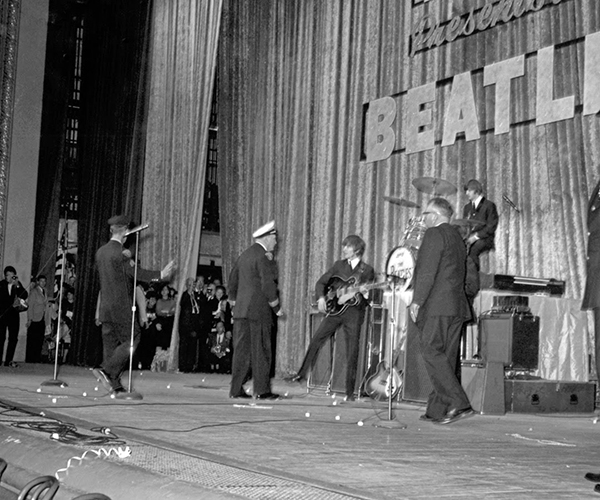An old black-and-white photograph of former Cleveland Indian Leroy “Satchel” Paige in uniform hangs on the wall. But there is no Chief Wahoo to be found. Instead, Paige is dressed in pinstripes with the words “Black Yankees” — one of the nine teams he played for prior to suiting up for the Tribe — emblazoned across his chest. Before Paige was a hurling force in the Major Leagues, he was a Negro Leagues baseball star.
Legendary Major League baseball players such as Jackie Robinson, Larry Doby and Roy Campanella are fellow members of the fraternity — baseball leagues formed in response to the rampant racism and segregation that kept African-American players out of Major League Baseball for half of the 20th century. Their stories are those of determination, grit and courage. And this month, the Negro Leagues Baseball Museum is taking those tales on the road. A Roadway Express trailer filled with Negro Leagues artifacts will visit Akron’s Canal Park Sept. 2 and Jacobs Field Sept. 10.
“Our goal is to document a piece of American history,” says Negro Leagues Baseball Museum director of marketing Bob Kendrick. “That is why this is so fascinating. People are walking in and being introduced to history they haven’t heard about.”
You probably didn’t know there were more than 200 all-black independent teams playing in the United States from the 1880s forward or that during the Negro Leagues’ heyday, Ohio was home to 18 teams, including four in Cincinnati, seven in Cleveland and three in Toledo — the most of any state. The Cleveland Buckeyes even won the Negro American League championship in 1945. By the 1960s, however, African-American baseball players had broken Major League Baseball’s color barrier, prompting the Negro Leagues to disband.
Aside from providing visitors a glimpse of game jerseys, autographed baseballs, pennants, stadium seats and players’ shoes, the Times of Greatness exhibit also has the potential to inspire baseball fans to learn more about the history behind it all.
“We hope this whets their appetite to come to Kansas City,” Kendrick says.
The city is home to the Negro Leagues Baseball Museum, founded in 1990 by a group of historians, business leaders and former baseball players who worried the leagues’ history would be lost forever if they didn’t make immediate moves to preserve it. Down the street from the museum is the abandoned shell of the Paseo YMCA, where Andrew “Rube” Foster and seven other team owners formed the Negro National League in 1920. The museum wants to buy the building and name it the Buck O’Neil Research and Education Center in honor of one of the league’s famous players. The building would also become the museum’s new home, following a multimillion dollar expansion.
“It will become a true museum,” Kendrick says. “Right now we are an attraction. It will be like Cooperstown.”
Meanwhile, the Negro Leagues Baseball Museum’s Times of Greatness traveling exhibit will stop at 22 Major League ballparks by the close of the 2005 baseball season, giving thousands of fans a free glimpse at an important chapter in the evolution of not only baseball, but American society.
“This is a great piece of history, greater than baseball,” Kendrick says. “The moral of the story is, if you dare to dream, you can be whatever you want in this country.”
Times of Greatness visits Canal Park Sept. 2 and Jacobs Field Sept. 10. For more information, visit www.nlbm.com.



